Have you ever bought a product after reading rave reviews of it, only to find yourself extremely disappointed? Welcome to the world of beauty! 🙂
I sometimes receive requests to weigh in on a particular product. The usual premise is something like this – I hear that many beauty bloggers receive free products or are paid to review products. This review says that Product X is terrific for my skin. So I’m wondering if this review is legit, and if so, is this product any good… What do you think?
An understandable concern. And it’s the inspiration for today’s post.
I will be perfectly honest with you – I never read beauty reviews. Well, I should say “almost never.” Occasionally, I will read a few (on products that concern me or are over-hyped). There are a number of reasons for why I don’t, which I’ll go over in this post. But that should not stop you from reading reviews.
Reviews have their place in every product category – whether it’s cars, appliances, computers, books, etc. Some reviews are very helpful. Most are not (in skincare), in my opinion. And the reason for this is two very important concepts that I want to explain today – the skin baseline and the point of reference of the reviewer. Both are crucial pieces of information that are missing from reviews.
Baseline
You know that there are different skin types. We all have different skin. This is obvious to anyone who was not born blind. But let me quickly go over Skin Type anyway.
The amount of sebum (oil) you produce, your pore size, your propensity to pigment or burn, the elasticity of your skin, how fast you wrinkle, the thickness of your skin, how sensitive you are, how you scar, and other characteristics make you different from other people.
 These differences are due to the genes you inherited. Differences also exist between ethnicities and races (because there are genetic differences among races.)
These differences are due to the genes you inherited. Differences also exist between ethnicities and races (because there are genetic differences among races.)
Differences in skin are also due to differences in age – your real (chronological) age, which is how old you really are, as well as your environmental age, which is how old you actually look. You could be 40 but look 30. And similarly, you could be 40 and look 50.
So we’re all clear that someone who has a different skin type from you has different needs from you and will respond to products differently from you.
Ok, so that was a quick review on SKIN TYPE (the inherent characteristics of your skin).
Now let’s consider SKIN CONDITIONS. This term means something else. It’s not skin type, which are the characteristics that you were born with. It’s the current state of your skin. What problems, if any, do you currently have? Problems could be acne, comedones (blackheads and whiteheads), roughness, dark spots, light areas, brown patches, redness, wrinkles, sagging, dry flaky skin, scarring, and so on.
Unlike skin type, skin conditions can change. They change because of changes in your health, how you care for your skin (things you do to it or put on it), changes in your diet or meds, and where you are physically located (climate/geographical influences). They can change for the better or for the worse. And it can yo-yo up and down like your weight.
So, here’s the main point of this post:
When you read a review, you (almost) never truly know the current state of that reviewer’s skin. Unless you can see and feel her/his skin with your own eyes and hands, and know that person’s skin history, you don’t know their BASELINE.
In other words, what is their starting point? I use the term BASELINE to mean:
- What were the current conditions of the person’s skin BEFORE they used the product?
- What is their experience level with this type of product?
Example – Evaluating A Review About An Exfoliant
Let’s say we’re evaluating a review on a product that’s exfoliating – this could be a toner, serum, moisturizer, cleanser, leave-on exfoliant/peel, or mask. And let’s say this product has an acid or enzyme that does the exfoliating.
Here is what you would need to know to determine if a reviewer’s experience and therefore conclusion about the product were applicable to you:
1. SKIN THICKNESS & TEXTURE – Does the reviewer have thick or thin skin? Someone with thick skin will respond differently to exfoliation than someone with thin skin. And next, what is the current texture of that skin?
If the skin is thick and naturally oily – an exfoliating toner, serum, or peel is likely to yield a greater “wow” effect than someone with thin skin that doesn’t have much dead skin build-up.
 Same thing with thick, sun-damaged skin (sun damage thickens the epidermis). Do you suntan regularly or spend a lot of time outdoors? Someone who spends a lot of time in the sun or has sun-damaged skin (rough, dry, flaky, thick) has literally “more to lose” (dead skin, that is). The Before and After is a bigger difference.
Same thing with thick, sun-damaged skin (sun damage thickens the epidermis). Do you suntan regularly or spend a lot of time outdoors? Someone who spends a lot of time in the sun or has sun-damaged skin (rough, dry, flaky, thick) has literally “more to lose” (dead skin, that is). The Before and After is a bigger difference.
Do you have oily skin, clogged pores, or acne? Your improvement gap is likely to be larger too. Exfoliation makes a greater impact on clogged, oily skin than someone who has clear, non-oily skin – all other things being equal.
Are you younger than 35? If so, your improvement gap is likely to be smaller than someone who is over 50 (with the same skin type as you). Mature skin tends to be thicker, drier, and flakier. So again, there is “more to lose,” and therefore a larger potential gain to be achieved from a product.
The difference between Before and After is key. Always consider the Before. The After is less important. Of course, the After is important, because we want results. A bad After is to be avoided. But if you’re reading a rave review, it’s clear the After is positive. To truly judge effectiveness, you need to know the Before state of that skin. From there, you can assess the size of the GAP between the Before and After.
2. CURRENT HABITS & PRIOR EXPERIENCE – Has the reviewer exfoliated before? Someone who has never exfoliated before will see a big improvement when she exfoliates for the first time. A person who is new to exfoliating will have a very different experience than someone who exfoliates regularly several times a week, and has been doing it for 10 years.
Now let’s get more nitty-gritty. If the reviewer has exfoliated before, was it a chemical exfoliant or a physical scrub? A chemical exfoliant produces much better results. So someone who has not chemically exfoliated before will feel differently about the product in question (a bigger result) than someone who already has (a smaller change).
Chances are, the newbie will rave about the product more. Or the person who is starting off with MORE problems. The better the skin (higher starting baseline), the smaller the improvement.
3. EXPOSURE TO PROFESSIONAL TREATMENTS – Has the reviewer ever received a professional exfoliation in a spa facial or a medical-strength chemical peel? Does she or use professional-strength products at home? The person who gets regular facials will have higher standards than someone who does not. (Because professional-strength exfoliants yield better results than retail exfoliants.)
 I have chosen exfoliants as my example because this is the one category where you will see the biggest raves. More than any other product category, you will see the biggest Before and After differences with exfoliating or resurfacing products. Assuming it’s a successful exfoliation that is. Not a case where there is a mismatch between exfoliant and skin. There are plenty of people with bad experiences, because the exfoliant they chose was not suitable for their skin, or they over-used it, or used it incorrectly.
I have chosen exfoliants as my example because this is the one category where you will see the biggest raves. More than any other product category, you will see the biggest Before and After differences with exfoliating or resurfacing products. Assuming it’s a successful exfoliation that is. Not a case where there is a mismatch between exfoliant and skin. There are plenty of people with bad experiences, because the exfoliant they chose was not suitable for their skin, or they over-used it, or used it incorrectly.
So why does exfoliation yield such a large potential Before & After gap? When you remove dead skin, skin automatically looks brighter, feels smoother, is less clogged, and absorbs other products better (which means it’ll be better hydrated afterward). This applies to all skin. Take away dead skin build-up, and all skin will look better.
Large gaps between Before and Afters are harder to achieve with non-exfoliating products. Trying to determine which anti-wrinkle or firming treatment is best for you? This is a much harder task. Results like that are not instant. They take longer – weeks or months. And the changes are smaller. It’s extremely hard, if not impossible, to un-wrinkle a deep crease or lift up drooping skin with topical products.
Point of Reference
Another thing to consider besides baseline is the point of reference of the reviewer. By this, I mean what kind of buyer is s/he?
Where does s/he buy her products? Department stores, retail stores like Sephora or Ulta, spas, doctor’s offices, the local drugstore? Or does she make her own products in the kitchen? Is she into trendy brands? Does she only want green beauty brands? Does she prefer luxury products?
 A person who buys products from drugstores will have different standards than someone who buys luxury brands in department stores. Drugstore products are not as cosmetically elegant as luxury products (which are generally very cosmetically elegant). We are more likely to think positively about a product if it has a cosmetically appealing texture. How a product feels plays a huge role in how we perceive that product. So, if you’ve been a drugstore user, and then you suddenly switch to a luxury cream that feels super silky and smooth, you may perceive the luxury cream to be better, even if it’s not.
A person who buys products from drugstores will have different standards than someone who buys luxury brands in department stores. Drugstore products are not as cosmetically elegant as luxury products (which are generally very cosmetically elegant). We are more likely to think positively about a product if it has a cosmetically appealing texture. How a product feels plays a huge role in how we perceive that product. So, if you’ve been a drugstore user, and then you suddenly switch to a luxury cream that feels super silky and smooth, you may perceive the luxury cream to be better, even if it’s not.
Similarly, some professional products may not be as cosmetically elegant compared with more upmarket retail brands. The priorities are different in each sales channel. For example, professional brands intended for the medical office channel are generally using higher amounts (clinical levels) of performance ingredients. That’s their major point of difference. In contrast, retail brands in the mid to upper market must clear a certain threshold in texture appeal to stay competitive with other retail brands in a very, very crowded market. Sometimes (you could even say quite often), the only source of difference among these retail brands is their texture and scent.
 I have a good friend who started using Revision Skincare and iS Clinical products (both professional lines) after I introduced her to them. She had used brands from Sephora and French pharmacies before that. None of them cheap. Her feedback to me was telling – I had no idea what I was missing. I didn’t realize there was better. You’ve spoiled me. Now that I’ve used Revision and iS Clinical, I can’t go back to retail brands.
I have a good friend who started using Revision Skincare and iS Clinical products (both professional lines) after I introduced her to them. She had used brands from Sephora and French pharmacies before that. None of them cheap. Her feedback to me was telling – I had no idea what I was missing. I didn’t realize there was better. You’ve spoiled me. Now that I’ve used Revision and iS Clinical, I can’t go back to retail brands.
That pretty much says it all. What kinds of products has the person used before? How much experience do they have with different brands? What are they comparing this product to? In other words, what is their point of reference?
And then, what kind of user is she? Is she high maintenance or low maintenance? High standards or low standards? Demanding or easy-to-please?
Let me give you myself as an example. I am very demanding about cleansing oils or balms. I will look carefully at a quality such as slip. What is the amount of friction between the cleanser and skin? How long does it take for this oil to start gliding freely? How long will the oil continue gliding before it starts to dry up and drag? Is there any loss of glide? How hard am I pushing it around my face? What is the viscosity – fluid, medium, thick? I could go on – you get my drift.
Someone who doesn’t know to look for these things or doesn’t care about them will give you a markedly different review than someone who is scrutinizing it like I am. It’s the difference between “This cleansing oil is amazing. What a great product.” and “It was okay. Not bad but has some issues.”
The more brands someone has used, and the longer they have been using products, the more they can compare and contrast. It’s like food. You probably know someone who is a foodie. He or she loves a certain food and has tried many versions of it. A person who has eaten say, mac-n-cheese in many restaurants, diners, or grocery stores around the country (or world) is going to know a lot about mac-n-cheese. Or at least that person can tell you about the range of differences. He has tried the high-brow version with truffle oil and the low-brow version (Kraft macaroni in a box). So if he comes across something in between, you can feel more assured it is really in-between.
So, point of reference is important. It tells you about the user’s prior level of experience and personal standards.
Why I Pay No Attention To Reviews
As a skin professional, I have a different approach to assessing products. I don’t read consumer beauty reviews. Instead, I go straight to the source – the company – and make my own assessments.
I talk to companies (their account reps, marketing/sales managers, founders, or chemists) and listen to what they tell me (or don’t tell me) about their products. I also talk with other skin professionals who use or have used those brands. I study the science behind the company’s products, read their clinical studies (if available – this also reveals a lot about a company), and look at the ingredient lists.
And finally, I evaluate the content and tone of the marketing copy – what they are saying and how they are saying it. The how is really important. If they’re being fluffy, generic, and insipid in describing their products, that tells me something about their background and values. I can’t take a company seriously if they make the same exaggerated, generic claims that plagues most beauty marketing copy. How many times do you want to hear that a product will make you more beautiful, younger in only X days, or give you gorgeous/amazing/stunning/fabulous/wonderful skin? (The overly used phrase “You are beautiful” makes me want to gag each time.)
So why don’t I read consumer reviews?
The biggest reason – most reviews are not useful to me for the simple reason that I don’t know the reviewer’s skin history, baseline, or point of reference. If the reviewer has a different skin type and skin conditions, her experiences are probably not useful to me. If a reviewer has a low baseline, it’s not relevant to me. My baseline happens to be very high. Given its current condition and my habits, it takes a lot for a product, especially a non-professional (retail) product, to make a significant impact on my skin.
When I first joined Instagram (as @JustAboutSkin), I was just a newbie to the beauty social media world. I read some rave reviews of whatever product was the ‘flavor of the month.’ Sunday Riley, By Terry, Tata Harper, Emma Hardie, and on and on. Out of curiosity, I bought some of the hyped-up products to see what all the fuss was about. In every single case, I was completely underwhelmed. All regrettable purchases. I quickly stopped paying attention to the raving on social media.
 Also, skincare products are highly personal – our preferences are strong in terms of what we like or don’t like. You may like gels, and I may prefer creams. What smells good to you may smell bad to me.
Also, skincare products are highly personal – our preferences are strong in terms of what we like or don’t like. You may like gels, and I may prefer creams. What smells good to you may smell bad to me.
Now, this is just me talking here – you may find it useful or enjoy reading reviews on social media or website blogs. There’s nothing wrong with that. To each his own. For me, for the reasons I have outlined earlier in this post, they are not a good use of my time. Plus I don’t enjoy it. I’d much rather be reading a news article, scientific paper, or novel in my spare time.
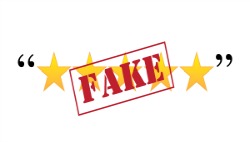 The second reason – as you know, reviews may be fake. Doesn’t it seem like there are more and more fake reviews everywhere? Hopefully, you can spot them with enough practice. Read enough, and you’ll start to notice similarities in sentence wording for fraudulent reviews.
The second reason – as you know, reviews may be fake. Doesn’t it seem like there are more and more fake reviews everywhere? Hopefully, you can spot them with enough practice. Read enough, and you’ll start to notice similarities in sentence wording for fraudulent reviews.
The third reason – reviews are often commercially biased. In other words, ‘paid’ reviews. Some beauty bloggers are paid to review products. Even if a reviewer has not actually been paid monetarily to review a product, they are “paid” in another way – through free products, which is another form of money.
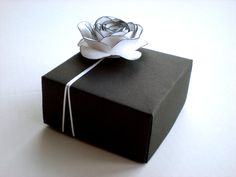 Receiving a free product creates, for most people, a sense of moral obligation to be gracious to the company who presented that “gift.” You think someone with a bad experience will trash a product in a public manner after a company has generously given it to her for free? For most non-professional reviewers (people who are not on the payroll of a media publication to write ‘objective’ product reviews), it’s not likely to happen. She’ll keep her thoughts to herself. In the beauty blogging world, there’s an expectation that you will write (hopefully) a positive review if you receive a product for free. And the people who want free beauty products want to continue receiving free products. To do that, they must be generally complimentary to the companies giving away free products.
Receiving a free product creates, for most people, a sense of moral obligation to be gracious to the company who presented that “gift.” You think someone with a bad experience will trash a product in a public manner after a company has generously given it to her for free? For most non-professional reviewers (people who are not on the payroll of a media publication to write ‘objective’ product reviews), it’s not likely to happen. She’ll keep her thoughts to herself. In the beauty blogging world, there’s an expectation that you will write (hopefully) a positive review if you receive a product for free. And the people who want free beauty products want to continue receiving free products. To do that, they must be generally complimentary to the companies giving away free products.
Of course, there are beauty bloggers and reviewers who are writing their honest opinions in reviews and providing helpful insights. But they may be buying their own products. Those are the reviews that you want to read. Someone who pays for their own products is ethically unfettered to write about their true experiences.
Beauty magazine reviews – of all the types of reviews out there, I find their recommendations to be the most useless. First, they are intended for a wide audience. Second, they’re not balanced (it’s all positive). Third, they are often influenced by advertisers. Media outlets are supposed to separate editorial and business (the division between Church and State). Does this really happen in beauty? Nah. Beauty magazines earn most of their revenue from advertising. Those advertising dollars are crucial to their financial survival. They’re not going to say anything negative about a product belonging to a large beauty company who has a huge advertising budget in their magazine, are they?
Tips On Reading Reviews
I’ll share with you how I quickly cut through beauty reviews on a retailer’s website.
1. Sample Size – How many reviews are there for this product? The more the better obviously. With a larger data set, meaningful trends are likely to surface. If there are less than 10 reviews, that can’t tell me anything with accuracy. 1000 reviews, and that’s a different story. Unfortunately, in the beauty industry, we don’t see review numbers that high. We’re lucky if there are more than 10 (real) reviews.
2. The Most Helpful Review – If this feature is available on a retailer’s website, I read the review that has been marked ‘Most Helpful’ or has received the most number of helpful thumbs-up’s. Chances are, there are details in that ‘helpful’ review that give some useful information.
3. Negative Outliers – I focus on negative reviews next. Most people are motivated to write a review if they have extreme experiences – either very positive or very negative. More on the negative. Negative reviews, assuming they are not fake, are revealing. They can debunk some of the hype, especially on pricey products. Again, you’re more likely to take the time to write a review if you’ve shelled out a huge sum for a product that gave you a negative experience. You may not bother if you spent $10 on it in a drugstore.
More importantly, with a negative review, you can spot potential issues or red flags either with the product itself or the packaging. For example, who did this product fail on and why? Did it happen to multiple reviewers? Packaging doesn’t get much attention, but it matters a lot to your experience. You may not stick to a product if you find it a pain to dispense or store. On certain types of products, such as serums, the way in which it is dispensed is important – not just in terms of convenience to you, but in how fresh it stays.
4. Details – Look for details in the review that indicate the person has actually used the product. Fake reviews are often general and short. They’re also overly positive. Examples are good. When a person says: I did this, this, and that. And this is what happened to me – that’s helpful.
5. Reviewer’s Profile – Is this a verified purchaser? How many other reviews have they written? What’s their skin like? How old? Male or female?
When you read reviews, look for someone who is similar to you – in skin type, skin conditions, race, gender, and age. Then pay attention to their baseline and point of reference.
Obviously, the more similar someone is to you (skin-wise), the more helpful. But even if someone’s skin is dissimilar from yours, you may be able to glean some insights from a large sample of legitimate reviews. But that’s a lot of work!
For individual beauty blog reviews, read it with Baseline and Point of Reference in mind.
You Be The Judge
One of the reasons I started this blog was to empower consumers to be savvier. So much of this business is flaky, and I personally don’t like being subjected to flakiness. It is my subjective opinion that much of how skincare is marketed today is superficial, like the rest of the beauty industry. I don’t think skincare should be superficial or flaky. Skin is a vital organ, just like other vital organs in the body, and therefore should be treated more like medicine, with a more fact-based, scientific approach.
Unfortunately, I find that skincare is treated more like fashion. It’s trend-oriented and celebrity-influenced. We follow trends, things get hyped up, they’re forgotten, and then we move on to the next big thing. There is also a tremendous herd mentality. Once someone gets on the bandwagon and others follow, there is a snowball effect. You suddenly have to try this product because everyone else is raving about it. Or because it looks cool to be using a certain brand.
I think it’s a waste of time to follow trends. We’re getting older minute by minute. There is no time to waste when it comes to skin. You can’t de-age skin. Time marches on. If something isn’t working, it’s a waste of time to keep on using it (even if you feel the need to finish it up since you spent good money on it). This is especially the case for anti-aging treatments. I am at an age where my skin is aging faster than it did when I was in my 20’s. I don’t want to waste my time on treatments that do nothing for my skin. Each day that it isn’t being treated optimally with the right products means one more day where my skin is left to its own devices (accelerated aging). My goal is decelerate the process. I can’t stop it of course, but I can slow it down.
 So you may have noticed me say at times – you be the judge. You can be the judge if you are informed. Skincare is not so risky that you will pay a high price for a wrong choice. It’s not like ingesting the wrong prescription medication. You’ll hear plenty of people scream warnings about putting toxic chemicals on your skin. The reality is, it’s VERY hard to get topical substances through and into skin. It’s the reason so many of you are disappointed with products. It’s VERY hard to reach the part of the skin (at a low enough depth) where changes, such as collagen building, can be stimulated. Skin is a sturdy defense wall – it was designed to keep out water (and other liquids) and harmful microorganisms. So topical products must overcome some major barriers before it can reach the layer of skin where the bloodstream flows.
So you may have noticed me say at times – you be the judge. You can be the judge if you are informed. Skincare is not so risky that you will pay a high price for a wrong choice. It’s not like ingesting the wrong prescription medication. You’ll hear plenty of people scream warnings about putting toxic chemicals on your skin. The reality is, it’s VERY hard to get topical substances through and into skin. It’s the reason so many of you are disappointed with products. It’s VERY hard to reach the part of the skin (at a low enough depth) where changes, such as collagen building, can be stimulated. Skin is a sturdy defense wall – it was designed to keep out water (and other liquids) and harmful microorganisms. So topical products must overcome some major barriers before it can reach the layer of skin where the bloodstream flows.
If you don’t think that you can properly identify or evaluate suitable products, or you don’t have the time or inclination (this is the vast majority of you), the easiest thing to do is to get a professional to advise you. Visit an esthetician or dermatologist (if your problem is more stubborn or aggressive). You don’t even need to follow their product recommendations. But at least, you’ll walk away with better knowledge about your skin and what it needs or should avoid.
If you can – try to sample a product before you buy. I know it’s not easy to get samples. Not every company offers samples, and the one you want may not be available. But try to sample before you commit. Fortunately, most retail stores (non-mass) will have testers and if you ask, a salesperson may be able to make you a sample that you can take home with you. Only get samples that come out of a pump, never a jar. Just make sure the opening is sanitized. When the salesperson isn’t looking (so you don’t offend them for not doing so themselves), pump out some product onto a tissue to get the residue from the opening out, and then wipe the opening with a tissue. Wipe with alcohol if it’s available.
After you’ve made an initial decision to try a product, let your own experience guide you. You are the best judge of whether a product agrees with your skin since you live in it 24/7. You look in the mirror every day and can see the changes day by day. Do you like it? Does it feel good? Don’t stick to it just because someone else has raved about it. Or psyche yourself to love it because someone else does. If you don’t like it, you don’t like it. And you’re not going to stick to using it. This is the biggest problem with sunscreens. Compliance is low with sunscreens because most of us don’t like how it looks or feels.
Time’s up for me. I have gone well over my blogging time budget and must stop here. Other duties call for me! I’m not sure if having read this far, you’ll find much hope for wading through skincare reviews. But I do hope that you feel more prepared to assess whether they apply to you. At the minimum, I hope this post helps you from getting carried away by hype or raving. We’re all susceptible, even I am.
Until next time, take care and be good to your skin.
Want new articles delivered straight to your inbox? Sign up here.




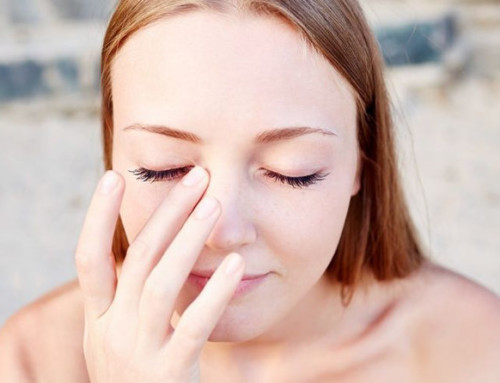
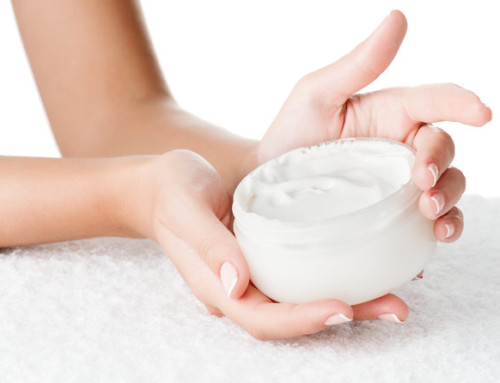
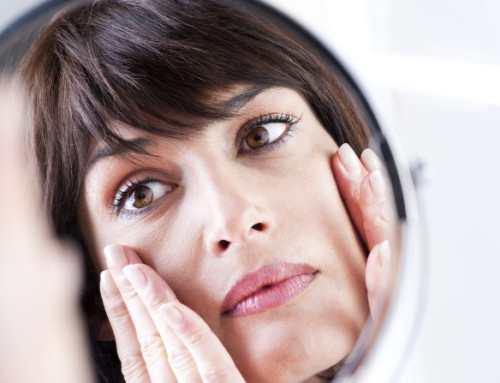

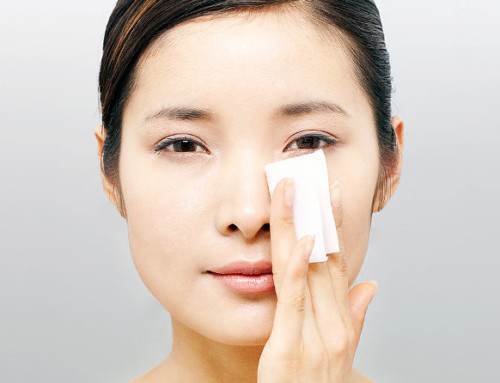
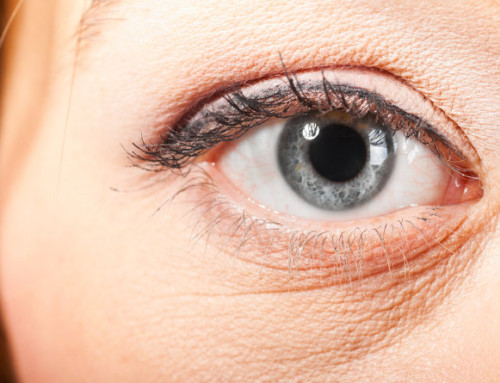
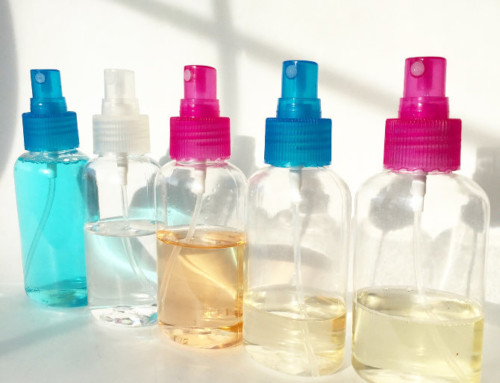


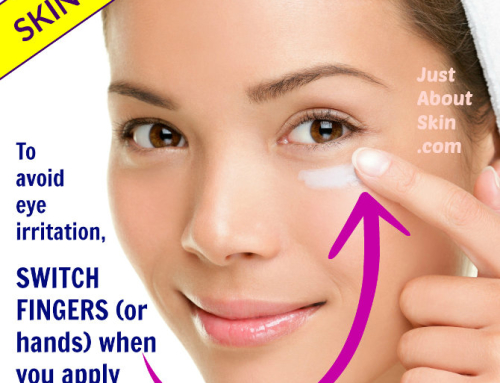
Your insight is so informative and helpful. You have me ‘thinking’ after each post that I read.
Thanks for the wealth of knowledge and experience that you share!
Thank you Tammie, very nice to receive your note!
What an eye opener this is! Thanks.
I’m so thankful I found your site, Rita. None of your posts disappoint. Like another commenter said, thank you so much for sharing your wealth of information, insight, and professional experience. I wouldn’t know half as much about my skin without this site, and I only started reading less than a year ago.
Thank you, a thousand times.
It’s so very nice to hear this Ali! Thank you very much for leaving me this note. And visiting my blog regularly 🙂 Happy skin to you!